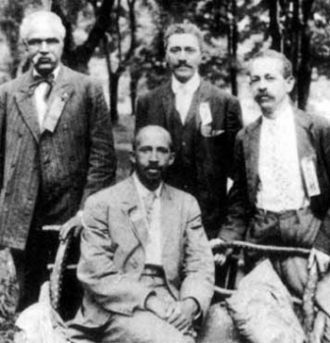USA, Washington D.C.
The American Negro Academy (ANA), founded on March 5, 1897, in Washington, D.C., was the first national African-American learned society. Although American blacks had established numerous local literary and scholarly societies beginning in the late 1820s, the goals and membership of the American Negro Academy made it a distinct and original endeavor. The academy’s constitution defined it as “an organization of authors, scholars, artists, and those distinguished in other walks of life, men of African descent, for the promotion of Letters, Science, and Art.” The decision to exclude women was based on the belief that “literary … and social matters do not mix.”
Although the chief concerns of the ANA’s founders were to strengthen the intellectual life of their racial community, improve the quality of black leadership, and ensure that arguments advanced by “cultured despisers” of their race would henceforth be refuted, it was equally significant that the organization was established at a time when European Americans were creating hundreds of learned, professional, and ethnic historical societies. The academy’s birth was an expression of this general movement among educated members of the American middle class.
EARLY MEMBERSHIP
From its establishment until its demise in 1928, the academy claimed as members some of the most important male leaders in the African American community. Alexander Crummell, its first president, was an Episcopal clergyman who held an A.B. from Queen’s College, Cambridge University. Other founders included Francis J. Grimké, a Presbyterian clergyman trained at Lincoln University and Princeton Theological Seminary; W.E.B. Du Bois, a professor of economics and history at Atlanta University and later a founder of the National Association for the Advancement of Colored People (NAACP); William H. Crogman, a professor of classics at Clark University in Atlanta; William S. Scarborough, a scholarly classicist who was on the faculty of Wilberforce University; and John W. Cromwell, a lawyer, politician, and former editor of the People’s Advocate, a black newspaper published in Washington, D.C., from 1878 to 1884.
Throughout its existence, the academy continued to attract some of the most intellectually creative black men in the United States. Some of those associated with the organization who achieved their greatest prominence after the turn of the century were John Hope, the president of Morehouse College and later of Atlanta University; Alain Locke, a writer, critic, and key figure in the Harlem Renaissance; Carter G. Woodson, a historian; and James Weldon Johnson, a poet, writer, and civil rights leader.
Relatively speaking, only a handful of educated black men were ever members of the academy. There were several reasons for this. First, the ANA was a selective organization, and entrance was controlled by the membership. Second, its activities and goals appealed mainly to a small group of black men who sought to function as intellectuals and who believed that the results of their efforts were crucial to the development and defense of their racial group. Third, it experienced continuous difficulties in realizing its goals. …
Source: http://www.encyclopedia.com/article-1G2-2831200032/american-negro-academy.html



 USA,
USA, 








